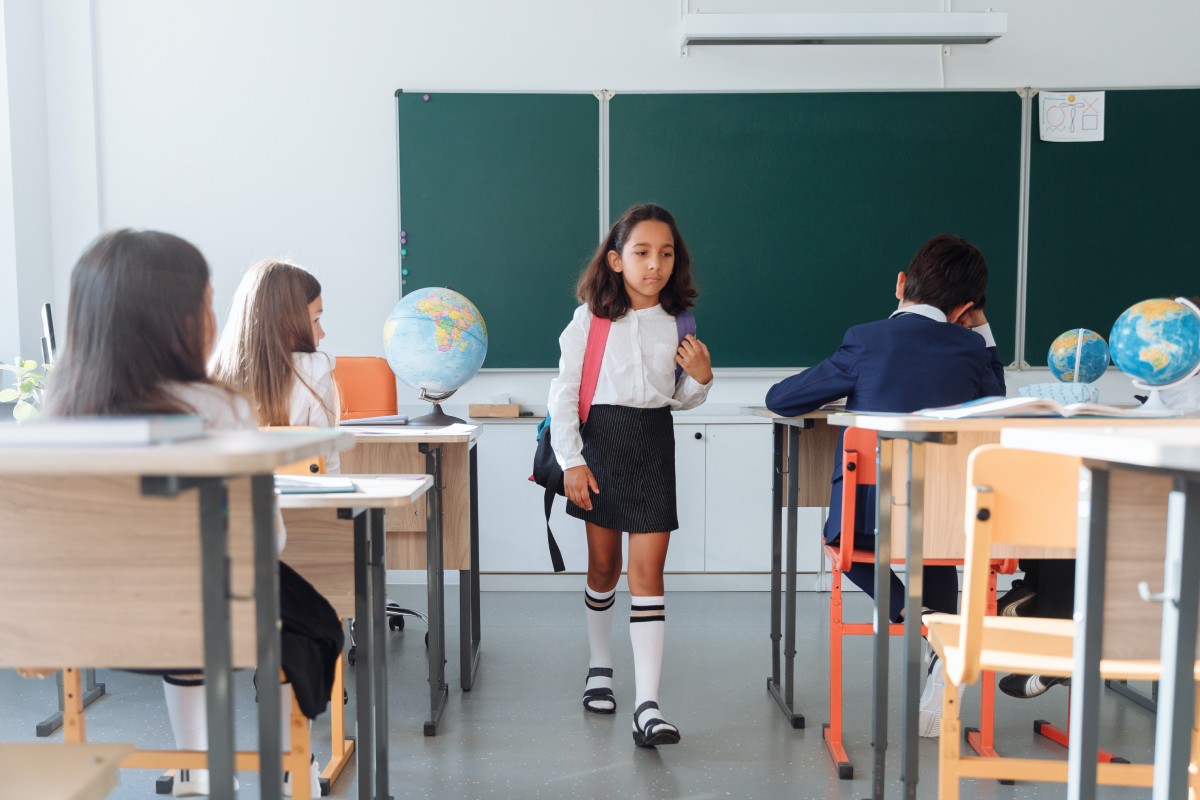Introduction
In the modern world, education doesn’t just involve academics. It also includes shaping the students into responsible citizens of the earth, helping them understand their role in sustaining our planet. This is where eco-friendly practices in schools come into play.
Role of Schools in Promoting Sustainability
Schools play an instrumental role in shaping future generations, making them perfect platforms to instill sustainability practices. By adopting eco-friendly habits, schools can provide hands-on learning experiences that help students understand the impact of their actions on the environment. Students who learn about conservation, recycling, and sustainability in schools are more likely to carry these habits into their adult lives, ultimately fostering a more sustainable future.
The Need for Eco-friendly Schools
With climate change and environmental degradation becoming increasingly pressing issues, the need for eco-friendly schools has never been more critical. Schools, with their significant consumption of resources, can lead by example by minimizing waste, reducing energy use, and promoting a culture of sustainability. This not only contributes to environmental conservation but also teaches students the importance of stewardship of the earth.
Moreover, eco-friendly schools provide healthier learning environments. A sustainable school uses less toxic materials, improves air quality, and fosters natural light, contributing to the overall well-being of students and staff.
Overview of the Guide
In this guide, we will explore various ways to encourage eco-friendly practices at schools. We will discuss the different areas of school life where sustainable practices can be incorporated - from the classroom to the cafeteria, and from the administration to the playground. We will also look into how schools can engage students, staff, and parents in their sustainability efforts and create a community-wide culture of environmental responsibility.
In closing, remember that transforming a school into an eco-friendly institution doesn’t happen overnight. It requires commitment, effort, and most importantly, the willingness to make changes for the better. As we move through this guide, think about the small steps your school can start taking today to make a big difference tomorrow. The future of our planet depends on our actions today, and schools play a pivotal role in this journey towards sustainability.
Implementing Recycling Programs
One of the most effective ways schools can encourage eco-friendly practices is by implementing comprehensive recycling programs. These initiatives not only reduce the amount of waste generated by the school community but also instill a sense of environmental responsibility among students and staff.

Types of School Recycling Programs
There are various types of recycling programs that schools can adopt. Paper recycling is perhaps the most common, given the amount of paper waste generated in classrooms. Schools can set up designated paper recycling bins and encourage students and staff to use them.
Composting programs can be implemented to manage organic waste like food scraps from the school cafeteria. The compost produced can then be used in the school garden, providing a practical example of the recycling process to students.
Schools can also consider electronic waste recycling. With technology being a significant part of modern education, outdated or broken electronic devices can pile up. Proper disposal of such items is crucial due to the harmful substances they contain.
Benefits of Recycling
The benefits of recycling in schools are manifold. First, it reduces the amount of waste that ends up in landfills, which helps conserve natural resources and reduces the school’s carbon footprint.
Second, it serves as a learning opportunity. Recycling programs can be integrated into the curriculum, allowing students to understand the importance of waste management and the environmental implications of their actions.
Third, recycling can encourage a sense of community. When everyone - students, teachers, and staff - participates in the recycling program, it can foster teamwork and a shared sense of responsibility for the school environment.
Tips for Successful Recycling Programs
To make a recycling program successful, schools should consider the following:
-
Educate the school community: Ensure that everyone understands the importance of recycling and how to do it correctly. Regularly communicate the impact of the school’s recycling efforts.
-
Make it easy to recycle: Place recycling bins in convenient locations around the school. Label them clearly to avoid contamination.
-
Involve students in the process: Assign roles and responsibilities to students in managing the recycling program. This not only ensures the smooth running of the program but also gives students a sense of ownership.
-
Regularly evaluate and improve the program: Monitor the effectiveness of the recycling program and make necessary adjustments. Celebrate successes to motivate continued participation.
In conclusion, implementing a recycling program in schools is a significant step towards promoting eco-friendly practices. It’s an investment not just in the school’s sustainability but in shaping the environmental stewards of the future. Remember, every piece of waste recycled is a step towards a cleaner, healthier planet.
Encouraging Active and Green Transportation
Transportation to and from school constitutes a considerable part of a school’s environmental impact. Active and green transportation methods can significantly reduce this footprint while offering a host of other benefits.

The Concept of Active Transportation
Active transportation refers to any form of travel that involves physical activity. Walking and biking are the most common examples. By promoting active transportation, schools can reduce car-dependent commutes, thereby decreasing the emissions associated with these journeys.
Benefits of Walking or Biking to School
Promoting walking or biking to school has multiple benefits.
-
Reduced environmental impact: Fewer car trips result in lower carbon emissions, contributing to a decrease in air pollution and global warming.
-
Health and well-being: Regular physical activity like walking or biking improves cardiovascular health, aids in maintaining a healthy weight, and boosts overall physical fitness.
-
Enhanced safety: With fewer cars around the school during pick-up and drop-off times, the safety of students is improved.
-
Better focus and academic performance: Studies have shown that students who engage in physical activity before school are more alert and perform better acadically.
Organizing ‘Walk to School’ Days
Organizing regular ‘Walk to School’ days is a great way to encourage active transportation. This event can help students and parents get into the habit of walking or biking to school while raising awareness about its benefits.
-
Start small: Begin with a single ‘Walk to School’ day and gradually increase the frequency as more students and parents get on board.
-
Promote the event: Use school newsletters, websites, and social media to spread the word. Highlight the benefits of active transportation.
-
Ensure safety: Make sure the routes students will take are safe. Organize walking groups or ‘walking school buses’ where a group of students walk to school together under the supervision of adult volunteers.
-
Recognize participation: Offer incentives or recognition to those who participate. This could be in the form of certificates, badges, or mention in the school newsletter.
Promoting active and green transportation can play a significant role in making schools more eco-friendly. It’s an initiative that fosters healthier students, safer school zones, and a cleaner, more sustainable environment. After all, every step or pedal stroke towards school is a move towards a greener future.
Integrating Sustainability into the Curriculum
Schools play a vital role in shaping the future generation’s attitudes, values, and behaviors. Integrating sustainability into the curriculum is an impactful way to foster eco-friendly practices, thereby creating a greener future.

Teaching about Climate Change and Environmental Issues
Education is the most powerful weapon we can use to change the world. As such, incorporating topics on climate change and environmental issues into the curriculum is crucial. It helps students understand the severity of the challenges our planet faces and their role in tackling them.
Teaching about climate change provides students with scientific knowledge about the causes and effects of global warming. Furthermore, it fosters critical thinking skills as students explore potential solutions to these pressing issues. Discussions on environmental issues such as deforestation, plastic pollution, and water scarcity help broaden students’ understanding of their environmental impact. This knowledge can lead to more informed choices and actions in their daily lives.
Real-world Learning through School Gardens
School gardens are excellent tools for hands-on, experiential learning. These living laboratories enable students to see the correlation between what they learn in the classroom and the world around them.
Gardening teaches students about the life cycles of plants, the importance of biodiversity, and the role of pollinators. Moreover, they learn about composting and organic farming practices, which highlight the importance of recycling and the avoidance of harmful pesticides.
School gardens also provide a platform to discuss larger environmental issues. For example, the decline in bee populations can be tied to discussions about industrial farming practices and their impact on ecosystems.
Environmental Clubs and Activities
Encouraging environmental clubs and activities is another excellent way to embed sustainability into school culture. These clubs can lead various initiatives such as recycling programs, energy conservation campaigns, and tree planting drives.
Participation in these activities enhances students’ leadership and project management skills. It also instills a sense of responsibility towards their environment, encouraging lifelong sustainable habits.
Consider organizing field trips to local nature reserves, recycling centers, or renewable energy plants. These experiences can provide students with a deeper understanding of environmental conservation and the practical aspects of sustainability.
In conclusion, integrating sustainability into the curriculum is an effective strategy to encourage eco-friendly practices at schools. By doing so, schools can create knowledgeable, aware, and proactive students ready to take on the environmental challenges of their generation.
Reducing Energy Usage
Energy consumption is one of the most significant contributors to our planet’s environmental issues. Schools, with their extensive facilities, can consume large amounts of energy, which can have a substantial impact on the environment. As such, it’s vital that schools take steps to reduce energy usage, turning these institutions into models of sustainability and energy efficiency for the community.

Energy Conservation in School Buildings
School buildings can significantly reduce their energy usage through several strategies. Improved insulation, energy-efficient lighting, and the usage of programmable thermostats are excellent starting points.
Modernizing HVAC systems can result in significant energy savings, especially in larger school buildings. LED lighting, which uses significantly less energy than traditional light bulbs, can be installed in classrooms, hallways, and outdoor spaces.
Additionally, educating students and staff about energy conservation is essential. Simple habits such as switching off lights, computers, and other electronic devices when not in use can result in substantial energy savings.
Introducing Renewable Energy Sources
Renewable energy sources, such as solar or wind power, are increasingly affordable and accessible. Installing solar panels or wind turbines on school grounds can significantly reduce a school’s reliance on non-renewable energy sources, thereby lowering its carbon footprint.
Furthermore, renewable energy installations provide an excellent learning opportunity for students. They can learn about alternative energy sources, see them in action, and understand their benefits and challenges. This real-world application of their classroom knowledge can be incredibly inspiring and educational.
Energy Conservation Competitions
Creating a school-wide energy conservation competition can be a fun and effective way to engage students in reducing energy usage. Competitions could involve individual classrooms or grades and could track reductions in energy usage over a specified period.
Rewards for winning teams could be environmentally-friendly prizes or even a fun class party. Not only does this teach students about energy conservation, but it also encourages teamwork and promotes a sense of school community.
In conclusion, reducing energy usage in schools is a crucial part of encouraging eco-friendly practices. By making energy conservation a priority, schools can save money, help protect the environment, and provide students with practical lessons in sustainability. More importantly, these efforts can inspire the next generation to become proactive stewards of our planet.
Improving School Cafeteria Practices
School cafeterias are often overlooked when considering eco-friendly practices in schools. However, they are a vital aspect of a school’s ecological footprint. From the food served to the waste produced, there are numerous opportunities to make the cafeteria more sustainable.

Implementing Farm to School Programs
Farm to School programs are an excellent way to provide fresh, local produce for school meals. These programs not only reduce the carbon footprint associated with transporting food long distances, but they also support local farmers and the local economy.
In addition to providing healthier food options for students, these programs can also be integrated into the curriculum. Students can learn about local agriculture, food systems, and the importance of supporting local farmers.
Reducing Food Waste
Food waste is a significant issue in many school cafeterias. There are various ways to tackle this, including portion control, offering a variety of food choices, and implementing share tables where students can leave uneaten food for others.
Composting is another effective strategy. Food waste can be composted and used in school gardens, providing a rich, natural fertilizer. This not only reduces the amount of waste going to the landfill but also provides students with a hands-on learning experience about the food cycle.
Encouraging Reusable Lunch Containers
The use of disposable containers and plastic cutlery contributes to a significant amount of waste. Encouraging students to bring lunch from home in reusable containers is a simple and effective way to reduce this. Schools can also consider switching to reusable trays and cutlery in the cafeteria.
To help facilitate this, schools can implement programs or competitions to incentivize students to use reusable containers. This could also extend to water bottles, encouraging students to bring refillable bottles instead of disposable ones.
In conclusion, improving cafeteria practices is a crucial step towards making schools more eco-friendly. By sourcing food locally, reducing food waste, and encouraging the use of reusable containers, schools can significantly reduce their environmental impact. More importantly, they can teach students important lessons about sustainability and responsible consumption, empowering them to make eco-friendly choices in their own lives.
Fostering a Culture of Sustainability
Creating an eco-friendly school isn’t just about implementing green practices. It’s also about fostering a culture of sustainability that permeates every aspect of school life. This requires the active participation of everyone in the school community, from administrators and teachers to parents and students.

Role of Teachers and Administrators
Teachers and administrators play a key role in fostering a culture of sustainability. They can model sustainable practices, integrate environmental education into the curriculum, and encourage student participation in eco-friendly activities. Furthermore, administrators can make sustainability a priority by implementing green policies and investing in sustainable infrastructure.
Professional development can also help equip teachers with the knowledge and skills to teach about sustainability effectively. Workshops, webinars, and conferences can provide valuable resources and ideas for integrating sustainability into various subjects and grade levels.
Involving Parents and the Wider Community
Parents and the wider community are also important partners in promoting sustainability in schools. Schools can communicate regularly with parents about their sustainability initiatives, provide tips for eco-friendly practices at home, and involve parents in green events or projects.
The wider community can also be involved through partnerships with local businesses, environmental organizations, and government agencies. These partnerships can provide resources, expertise, and support for various green initiatives.
Encouraging Student Leadership in Eco-initiatives
Encouraging student leadership is a powerful way to foster a culture of sustainability. Students who take on leadership roles in eco-initiatives not only learn valuable skills but also become passionate advocates for the environment.
Schools can foster student leadership by creating green clubs, assigning roles for students in sustainability projects, and recognizing student achievements in environmental stewardship. By giving students a voice and responsibility, schools can empower them to make a positive impact on their environment.
In conclusion, fostering a culture of sustainability requires a whole-school approach that involves everyone in the school community. By making sustainability a part of the school’s values and everyday practices, schools can not only reduce their environmental impact but also inspire students to become responsible, environmentally conscious citizens.
Case Studies of Successful Green Schools
There are numerous schools worldwide that have successfully embraced eco-friendly practices and have seen immense benefits from doing so. Examining these case studies can provide inspiration and practical ideas for other schools looking to embark on their sustainability journey.

Example of an Eco-friendly School Initiative
Consider the case of the Green School Bali in Indonesia, renowned for its commitment to sustainability and environmental education. Its campus is a stunning model of eco-design, featuring structures built from locally-sourced bamboo and powered by renewable energy. The school’s curriculum integrates sustainability in every subject and places a strong emphasis on experiential learning. Students participate in numerous hands-on projects, from maintaining an organic garden to managing a waste recycling system.
Lessons Learned from the Case Study
The success of the Green School Bali underscores the importance of commitment and holistic thinking in implementing eco-friendly practices. The school’s approach isn’t confined to a few isolated initiatives; sustainability is integrated into every aspect of the school’s operations, curriculum, and culture.
A key factor in the school’s success is its emphasis on hands-on, real-world learning. This approach not only deepens students’ understanding of sustainability but also empowers them to become active contributors to a sustainable future.
How Other Schools Can Implement Similar Practices
While not every school can replicate the Green School Bali’s model exactly, there are many practices that can be adapted to different contexts.
Firstly, schools can start by making sustainability a part of their vision and values, and reflect this in their policies and practices. This might involve implementing a recycling program, promoting active transportation, or investing in energy-efficient infrastructure.
Secondly, integrating sustainability into the curriculum is key. This doesn’t necessarily require a complete overhaul of the curriculum; even small steps like incorporating environmental topics into existing subjects or organizing a few hands-on projects can make a significant difference.
Lastly, schools can foster a culture of sustainability by involving everyone in the school community — administrators, teachers, students, and parents. By working together, the school community can create an environment that not only educates students about sustainability but also inspires them to take action.
In conclusion, the case of Green School Bali demonstrates that with commitment, creativity, and community involvement, schools can become powerful catalysts for sustainability. By learning from successful examples, schools around the world can find their own path towards becoming greener, more sustainable places of learning.
Overcoming Challenges in Promoting Eco-friendly Practices
While promoting eco-friendly practices at schools is certainly beneficial, it’s not without its challenges. The process can involve facing budget constraints, resistance to change, and the need for long-term commitment. This section will provide guidance on how schools can navigate these challenges effectively.

Addressing Budget Constraints
The perceived high costs associated with implementing eco-friendly practices can sometimes be a stumbling block. However, there are ways to address budget constraints. Many sustainable initiatives, such as recycling programs or energy conservation measures, can actually save money in the long run. For more costly initiatives like installing renewable energy systems, schools can seek out grants, partnerships, or fundraising opportunities. An added advantage is that these efforts can further engage the school community and raise awareness about sustainability.
Dealing with Resistance to Change
Resistance to change is a common obstacle in many initiatives, not just those related to sustainability. To overcome this, schools need to communicate the benefits of eco-friendly practices clearly to all stakeholders, including staff, students, and parents. By involving everyone in the planning and implementation stages, schools can foster ownership and commitment. Regularly celebrating successes and sharing positive stories can also help sustain enthusiasm and counter resistance.
Staying Committed over the Long Term
Promoting eco-friendly practices is not a one-time effort but a long-term commitment. To maintain momentum, schools need to embed sustainability into their culture and everyday practices. This could involve creating a sustainability team or committee, integrating sustainability into the curriculum, or setting regular eco-friendly goals and tracking progress. By making sustainability a core part of the school’s identity, schools can ensure that their eco-friendly practices endure over the long term.
In summary, while there are challenges in promoting eco-friendly practices at schools, they are not insurmountable. With creativity, collaboration, and commitment, schools can overcome these hurdles and become champions of sustainability. And in doing so, they not only contribute to the well-being of the planet but also prepare their students to be informed, responsible citizens of the future.
Conclusion
As we wrap up our journey through eco-friendly practices in schools, it becomes clear that fostering a sustainable environment is not only essential for our planet but also greatly beneficial for the education sector. From implementing recycling programs to integrating sustainability into the curriculum, there are numerous steps schools can take to cultivate a culture of environmental responsibility.

Recap of Eco-friendly Practices for Schools
We began by exploring the significance of sustainability in schools and delved into various ways to implement it. These included recycling, promoting active transportation, integrating sustainability into the curriculum, reducing energy usage, improving cafeteria practices, fostering a sustainability culture, and learning from successful green school case studies. Each of these methods has its unique benefits and can contribute significantly to transforming a school into an eco-friendly institution.
The Future of Sustainability in Education
Looking ahead, sustainability in education is set to play an even bigger role in shaping the future. As the environmental challenges we face continue to grow, so too does the importance of educating our young people about sustainability. Schools that adopt eco-friendly practices will not only reduce their own environmental impact but also empower their students to make a difference. This, in turn, can foster a generation of environmentally conscious individuals who are equipped to tackle the world’s sustainability challenges.
Encouragement for Schools to Take the First Step Towards Sustainability
For schools yet to embark on their sustainability journey, remember that every step counts, no matter how small. Whether it’s starting a recycling program, planting a school garden, or simply teaching students about the importance of environmental responsibility, each action contributes to a more sustainable world. Do not be deterred by potential challenges, as they can be overcome with commitment, creativity, and collaboration.
In conclusion, the shift towards sustainability in schools is not only an environmental necessity but also an educational opportunity. By adopting eco-friendly practices, schools can create healthier, more vibrant learning environments, while empowering their students to become active participants in preserving our planet. So why wait? Let’s take that first step towards a more sustainable future today.

